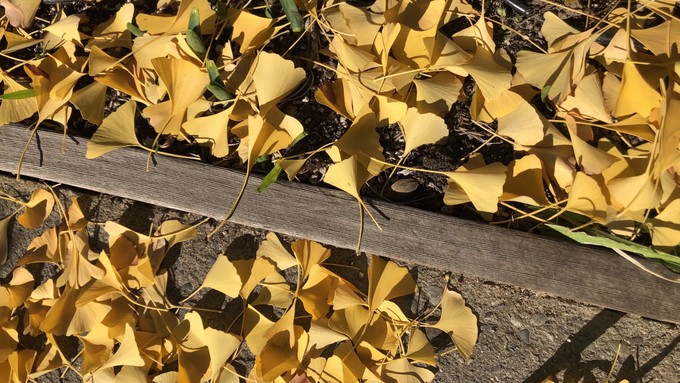
Chilly nights ahead; make most of clear days

Fallen leaves have extra benefits. You can sweep or rake them up, but leave some on the soil for mulch and in places for beneficial insects to winter under. Kathy Morrison
Keep your sweater handy – and some warm gloves, too.
Sacramento can expect another clear and chilly week, according to the National Weather Service. Daytime highs will be mostly in the low 60s before finally warming up to 66 by Thanksgiving Day. Overnight lows will dip into the 30s, flirting with frost danger.
“Near freezing temperatures are expected for the Valley and foothills through the weekend into Monday morning,” tweeted the weather service’s Sacramento office. “Don’t forget to bring your pets indoors!”
Give animals a warm, safe place to sleep, off cold floors, says the weather service.
Take care of your plants, too. Insulate new transplants with a blanket of mulch. Keep frost cloths handy for the most sensitive plants such as succulents, tropical plants and young citrus trees.
By next weekend, overnight lows are expected to warm slightly, staying above 40 degrees. Although we’ll see some clouds by midweek, no rain is in the forecast.
Stay warm by enjoying some outdoor activity, like showing your garden some TLC.
* Cold nights and gusty winds are quickly finishing off autumn foliage. Rake up fallen leaves – great for making compost. Turn some of those leaves into mulch.
* To help prevent leaf curl, apply a copper fungicide spray to peach and nectarine trees after they lose their leaves this month. Leaf curl, which shows up in the spring, is caused by a fungus that winters as spores on the limbs and around the tree in fallen leaves. Sprays are most effective now – when there’s no rain in the forecast and any wind has died down.
* Keep planting bulbs to spread out your spring bloom. Some possible suggestions: daffodils, crocuses, hyacinths, tulips, anemones and scillas.
* This is also a good time to seed wildflowers and plant such spring bloomers as sweet pea, sweet alyssum and bachelor buttons.
* Now is still a great time to plant most trees and shrubs. This gives them plenty of time for root development before spring growth. They also benefit from winter rains.
* Set out cool-weather annuals such as pansies and snapdragons.
* Lettuce, cabbage and broccoli also can be planted now.
* Plant garlic and onions.
* Give your azaleas, gardenias and camellias a boost with chelated iron.
* After they bloom, chrysanthemums should be trimmed to 6 to 8 inches above the ground. If in pots, keep the mums in their containers until next spring. Then, they can be planted in the ground, if desired, or repotted.
* Prune non-flowering trees and shrubs while dormant.
Comments
0 comments have been posted.Sacramento Digs Gardening to your inbox.
Sites We Like
Garden Checklist for week of May 5
Survey your garden after the May 4 rainstorm. Heavy rain and gusty winds can break the neck of large flowers such as roses. Also:
* Keep an eye on new transplants or seedlings; they could take a pounding from the rain.
* Watch out for powdery mildew. Warmth following moist conditions can cause this fungal disease to “bloom,” too. If you see a leaf that looks like it’s dusted with powdered sugar, snip it off.
* After the storm, start setting out tomato transplants, but wait on the peppers and eggplants (they want warmer nights). Pinch off any flowers on new transplants to make them concentrate on establishing roots instead of setting premature fruit.
* Trim dead flowers but not leaves from spring-flowering bulbs such as daffodils and tulips. Those leaves gather energy to create next year's flowers. Also, give the bulbs a fertilizer boost after bloom.
* Pinch chrysanthemums back to 12 inches for fall flowers. Cut old stems to the ground.
* Mulch around plants to conserve moisture and control weeds.
* From seed, plant beans, beets, cantaloupes, carrots, corn, cucumbers, melons, pumpkins, radishes and squash.
* Plant onion sets.
* In the flower garden, plant seeds for asters, cosmos, celosia, marigolds, salvia, sunflowers and zinnias. Transplant petunias, zinnias, geraniums and other summer bloomers.
* Plant perennials and dahlia tubers for summer bloom.
* Don’t wait; plant summer bulbs, such as gladiolus and tuberous begonias.
* Harvest cabbage, lettuce, peas and green onions.